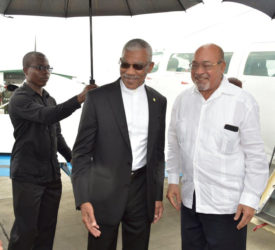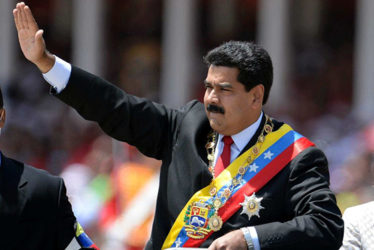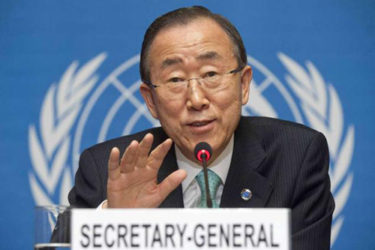Even at a time when the attention of Guyana’s coalition government is focused on energizing the country’s underperforming economy, the administration still cannot afford to allow its attention to wander from a foreign policy agenda that includes managing relations with two neighboring countries with which separate territorial controversies loom large.
As 2016 draws to a close, important developments occurred on both fronts. On the same day, December 16, that news broke that outgoing United Nations Secretary General had decided that the protracted Good Offices process, no more than a holding position in pursuit of a settlement of Venezuela’s age-old territorial claim against Guyana would remain in place for another year, Georgetown was playing host to Suriname, another periodically prickly neighbor, its President Desi Bouterse arriving in the country early in the morning for a whole day official visit.

In the matter of the UN Secretary General’s decision on Venezuela’s territorial claim against Guyana it has been decided that unless “significant progress” is made towards a resolution the claim will move to the International Court of Justice (ICJ). Unsurprisingly, Guyana has quickly announced its acceptance of the decision. No one doubts for a moment that what the Good Officer process has not accomplished in more than a quarter of a century. “The Government of Guyana accepts the decision of the Secretary General,” the statement from the Government of Guyana read though, perhaps the more important issue in the short term might be the response of a mercurial Venezuela and President Nicolas Maduro’s troubled administration.
On the Suriname side Guyanese were given perilously little notice of the Bouterse visit out of which came agreement on the appointment of a Special Envoy in order to accelerate the notoriously sluggish pace of the implementation of cooperation agreements reached between the two countries and the desirability of the resuscitation of the Guyana-Suriname Cooperation Council. Bourtese’s visit and more particularly the signing of the agreement would appear to point to an admission by both Georgetown and Paramaribo that the Council has not done nearly enough to forge bilateral relations in areas that can be mutually beneficial.

Guyana’s President David Granger had met with his Surinamese on July 1 in Nieuw Nickerie and had signed a joint communiqué identifying several areas of mutual interest to be pursued, going forward. Truth be told, however, these types of engagements between the developed, but several months after, progress made thus far is unsatisfactory. As such, the Presidents have agreed to put a structural mechanism in place that would be results-based, allowing for the implementation of agreements within specified timeframes.
“We have created a mechanism in which the different issues that will be brought up, or have been brought up per sector, can be discussed; and that these will be implemented and monitored within a certain timeframe, and then reported back,” President Bouterse said.
He said this mechanism allows for a special envoy to report directly to both Presidents.
Weighing in on the issue, President Granger said: “We have embarked on a series of engagements, and today we took decisions that will not only expedite matters that were taken in previous years, but, more importantly, planned for the future. We are particularly concerned with the economic integration of our two states and the removal of any obstacles to that process of integration.”

The problem with Guyana/Suriname relations, of course, is that both sides have traditionally come to the negotiating table with strong views on the territorial claim, a circumstance, it is felt that has barred the way to the strengthening relations in areas of mutual interest. Ironically, even the major flarreups, like the 2001 eviction of the CGX oil rig from the Corentyne river by Surinamese gunboats have not been enough to completely rupture relations between the two countries.
Over the past two years two major meetings between businessmen on both sides of the river have been held, a circumstance that underscores a mutual recognition of the importance of country to country relations in the arena of business and entrepreneurship. The Guyana side will set much store by the unimpeded movement of people across the border as well as the firming up of airline travel between the two countries. As such, the state media reported President Granger as saying that discussions centred around the movement of the Canawaima ferry and the other forms of traffic across the river that have implications for people’s livelihoods. A further upbeat note has been struck with the announcement that both Brasilia and Beijing may have an interest in financing the construction of a bridge across the river.
The joint communique issued at the conclusion of what the administration here termed a “high-level meeting” contained the accustomed diplomatic chatter including the declaration that the exchange between the two Heads were “fruitful” and the Presidents Granger and Bouterse “directed that Guyana-Suriname Cooperation Council be resuscitated, and that their respective technical officials meet to discuss issues in relation to the protection of the environment, agriculture, trade, tourism, investment and cross-border activities through their respective committees.” The reality is, however, that the two sides will have to demonstrate in deed as much as in word that closer ties in practical areas of functional cooperation can withstand the strain of a territorial controversy that continues to be both real and potentially incendiary.





